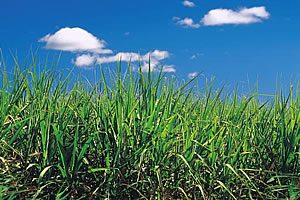Di-Ammonium Phosphate (DAP)
| N% | P% | K% | S% | Zn% | |
|---|---|---|---|---|---|
| Typical Analysis | 18 | 20.2 | 0 | 1.5 | 0 |

- Chemical Name
- Diammonium phosphate
- Crop Segments
- All
- Features
- High analysis nitrogen and phosphorus contained in every granule.
- Quality & Handling
- Nominal 2-4mm size granule, free flowing product.
Bulk density 0.9 tonnes per cubic metre. - Blending
- Can be blended with most products and trace elements.
1. Features
- High analysis source of phosphorus.
- N:P ratio of 1:1 makes it an effective source of nitrogen.
- DAP releases free ammonium. Nitrogen in the ammonium form resists leaching and is a slower release form of nitrogen.
- The free ammonium gives a higher pH reaction immediately around the granule.
- The low cost of nitrogen in DAP makes it a cost effective source of nitrogen if Phosphorus is also required.
2. Manufacture
Ammonia gas is combined with phosphoric acid in a ratio of 1:1, granulated, dried and screened.
3. Uses
One of the major cropping fertilisers used in Australia as a source of both phosphorus and nitrogen. The high phosphorus content makes it a true high analysis fertiliser. DAP and DAP blends are used on a range of crops in broad-acre farming, cereals, sugar cane, sowing pastures, dairy pastures, fodder crops and also in horticultural crops; for example, vegetables and tree crops.
4. Storage and handling
- Does tend to take up moisture, both in storage and in the field.
- Storage in a bulk shed is the preferred storage method. Covering with a tarp may reduce any moist air uptake.
- The use of augers may damage the fertiliser and increase any handling problems.
- Do not leave exposed to moist air.
- Either fill or empty (completely), the drill or air-seeder fertiliser box overnight.
- Cover seeding equipment with a tarp.
- Raise the equipment tynes from the soil to stop moisture moving up the tubes.
5. Restrictions
- For sowing there is little risk of affecting germination, even at high rates. The general rule of a maximum of 20kg/ha of nitrogen at seeding of cereals should be used.
- When applying DAP, the fertiliser should be banded 5cm away from the seed, either below or to the side. DAP is low in sulphur – 1.5%. It is not recommended for high sulphur requiring crops such as canola, unless blended with sulphate of ammonia.
- Do not store in silos.




